Is your Windows 10 computer running slow? Although this is a very frustrating issue, you’re not the only person to experience it. More importantly, you should be able to improve your Windows 10 computer performance pretty easily…
To improve your Windows 10 system performance
The following are 6 tips that have helped many Windows 10 users improve their device performance. You may not have to try them all; just work your way down the list until you find the one that does the trick for you.
- Disable your startup items
- Check your power plan
- Update your system
- Disable the visual effects
- Run Disk Cleanup
- Check for virus and malware
Method 1: Disable your startup items
Startup items are the programs or processes that run automatically when your operating system starts up. They can affect the startup time of your Windows 10 and your computer performance. You should disable the ones you don’t need.
To do so:
- Right click any empty space of the taskbar, then click Task Manager.
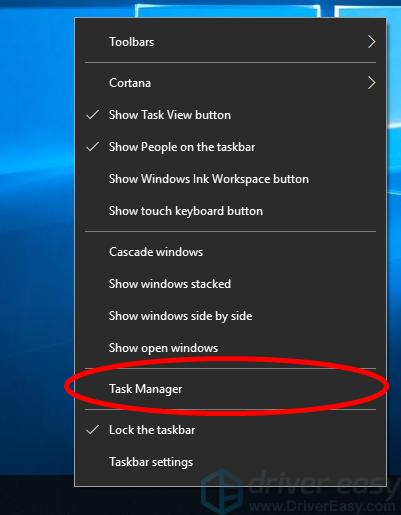
- Click the Startup tab, then disable the items you don’t need (right click each of them and click Disable). If you’re not sure what an item is, you should do some research on the Internet to see if you need to keep it.
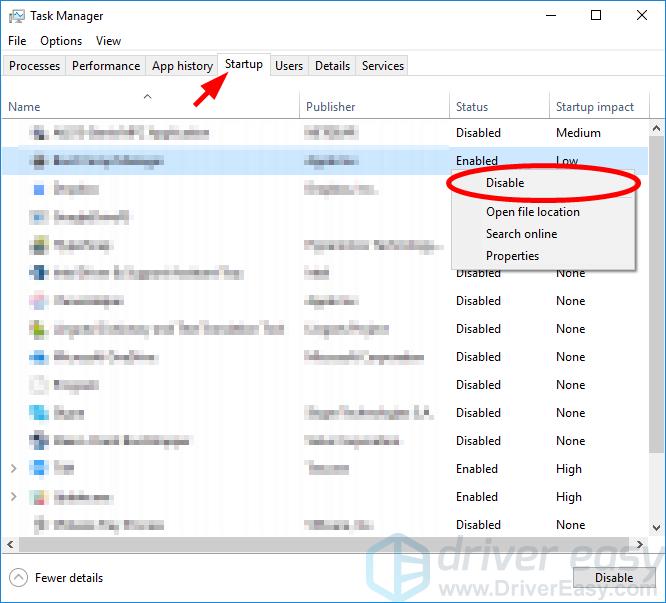
- Restart your computer.
These programs and services won’t open automatically the next time your Windows 10 system starts up.
Method 2: Check your power plan
Your Windows 10 device may be running slow because you’re using an energy saving power plan, which reduces your computer performance. To check and change the power plan you’re using:
- Right click the Start button in the lower left corner of your screen, then click Power Options.
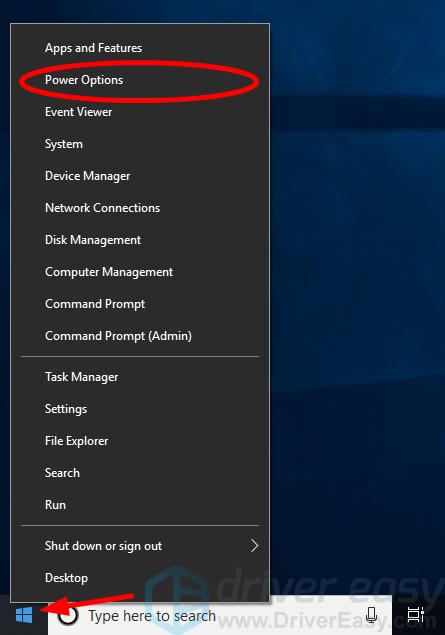
- Click Additional power settings.
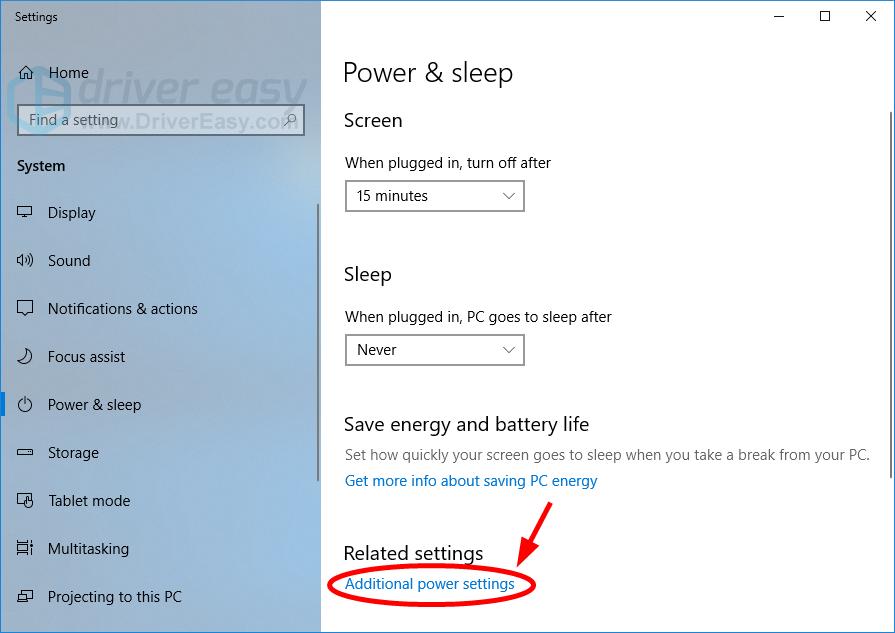
- Make sure the Power saver plan is NOT chosen. For the best performance, you should choose the High performance plan. But if you want a longer battery life, it’s recommended that you select the Balanced plan.

Now you’ve chosen a power plan that favors performance for your Windows 10 system.
Method 3: Update your system
To fix your performance issues, it’s important to keep your system and device drivers up to date. Here’s how to do so…
Update your Windows 10 system
- Click the Start button in the lower left corner of your screen, then click the Settings icon.
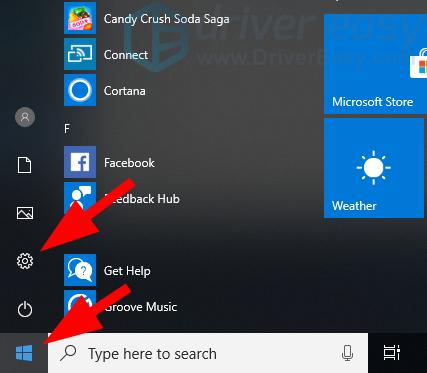
- Click Update & Security.
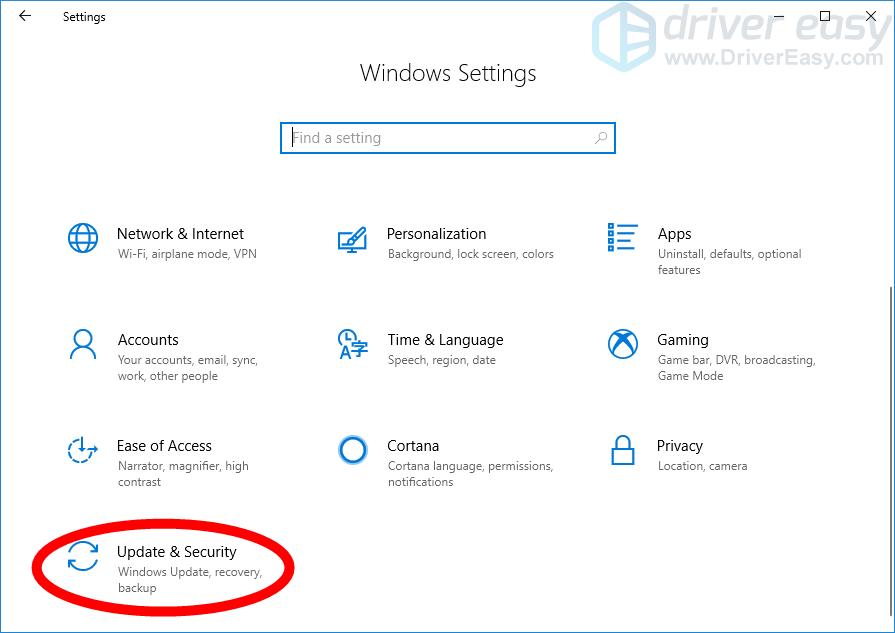
- Click Check for updates.
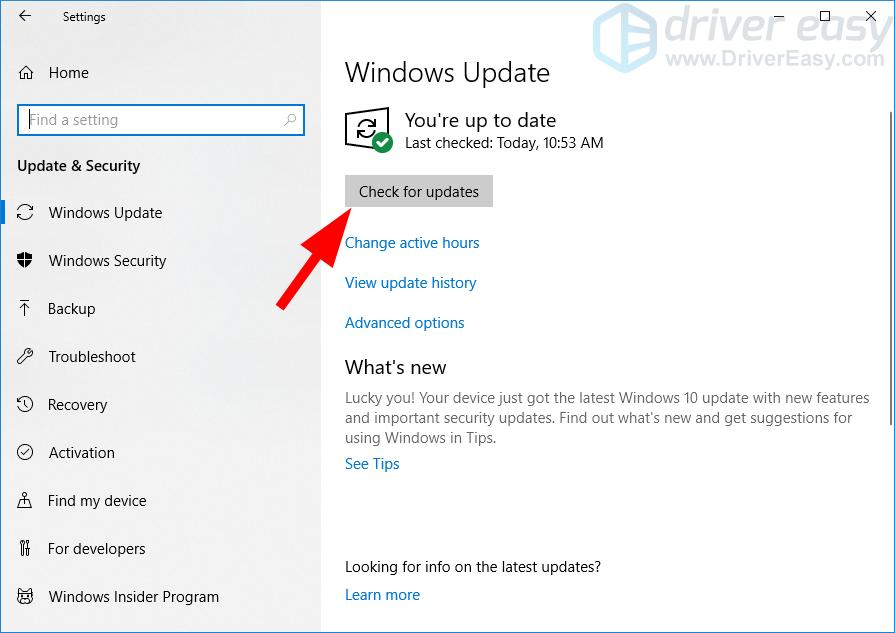
- Wait for Windows Update to update your operating system.
Update your device drivers
You should also keep your device drivers on your system up to date. This will help you stabilize your system, generally. If you don’t have the time, patience or skills to update your drivers manually, you can do it automatically with Driver Easy.
Driver Easy will automatically recognize your system and find the correct drivers for it. You don’t need to know exactly what system your computer is running, you don’t need to risk downloading and installing the wrong driver, and you don’t need to worry about making a mistake when installing.
You can download and install your drivers by using either Free or Pro version of Driver Easy. But with the Pro version it takes only 2 clicks (and you get full support and a 30-day money back guarantee):
- Download and install Driver Easy.
- Run Driver Easy and click the Scan Now button. Driver Easy will then scan your computer and detect any problem drivers.

- Click the Update button next to each device to download the latest and correct driver for it, then you can manually install the driver. Or click the Update All button at the bottom right to automatically update all outdated or missing drivers on your computer. (This requires the Pro version — you will be prompted to upgrade when you click Update All)
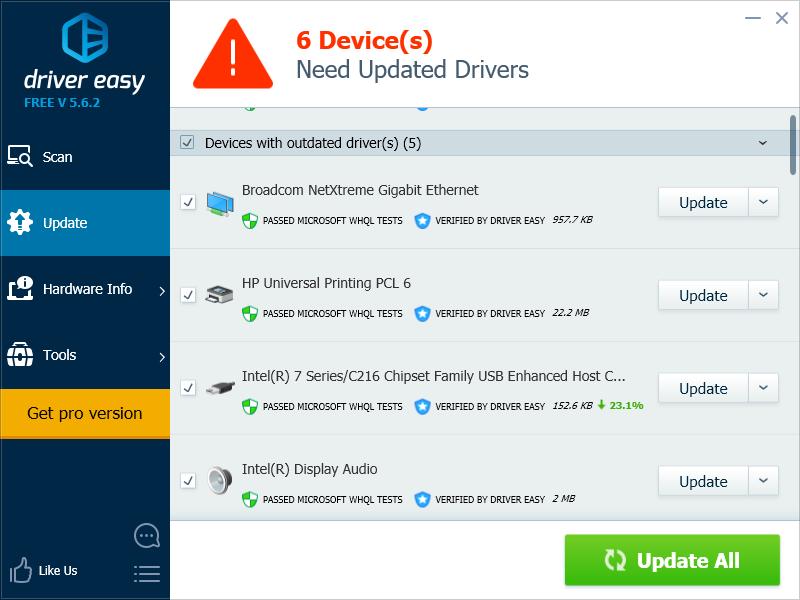
You can do it for free if you like, but it’s partly manual. - Restart your computer.
Method 4: Disable the visual effects
Windows 10 has a lot of fancy visual effects, which may take up a large amount of system resources. Try disabling these visual effects to see if this makes your Windows 10 computer faster.
- Press the Windows logo key and R on your keyboard to invoke the Run box.
- Type “sysdm.cpl” and press Enter on your keyboard.

- Click the Advanced tab, then click Settings in the Performance section.
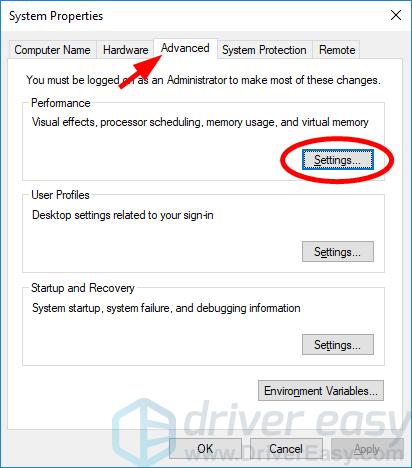
- Click Adjust for best performance, then click OK.
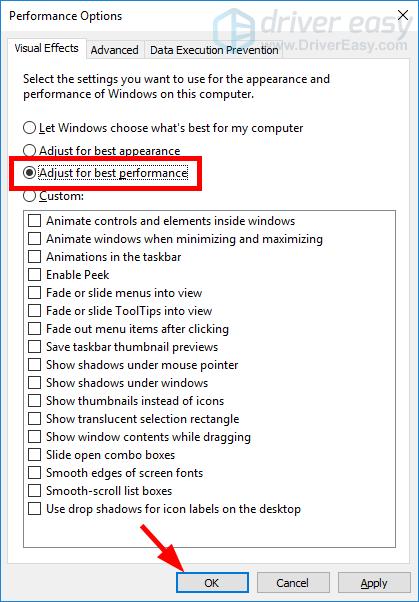
- Click OK.
Now you’ve disabled all your visual effects. And this should make your system run faster.
Method 5: Run Disk Cleanup
If your system volume (usually your C drive) is running out of space, it will also slow down your Windows 10 system. You should use the Disk Cleanup utility to free up your disk space. To do so:
- Press the Windows logo key and R on your keyboard to invoke the Run box.
- Type “cleanmgr.exe” and press Enter on your keyboard.
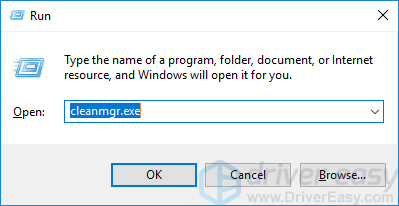
- Click Clean up system files.

- Click Yes when you’re prompted.
- Check all items, then click OK.

- Click Delete Files.
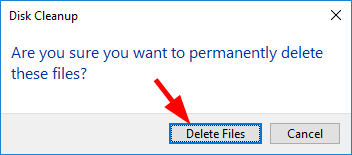
- Wait for the Disk Cleanup utility to clean the files.
This should free up your disk space and improve your system performance.
Method 6: Check for virus or malware
Virus or malware can slow down your Windows 10 system. They can take up a lot of system resources and decrease your system performance. To see if that’s the case for you, you should run a scan on your computer for virus or malware.
Run Windows Defender or the antivirus solution you’re using. If it finds any suspicious file or program, remove it and see if this improves your Windows 10 system performance.
Hopefully one of the fixes above worked for you. Please leave your comment below if you have any questions or suggestions.





